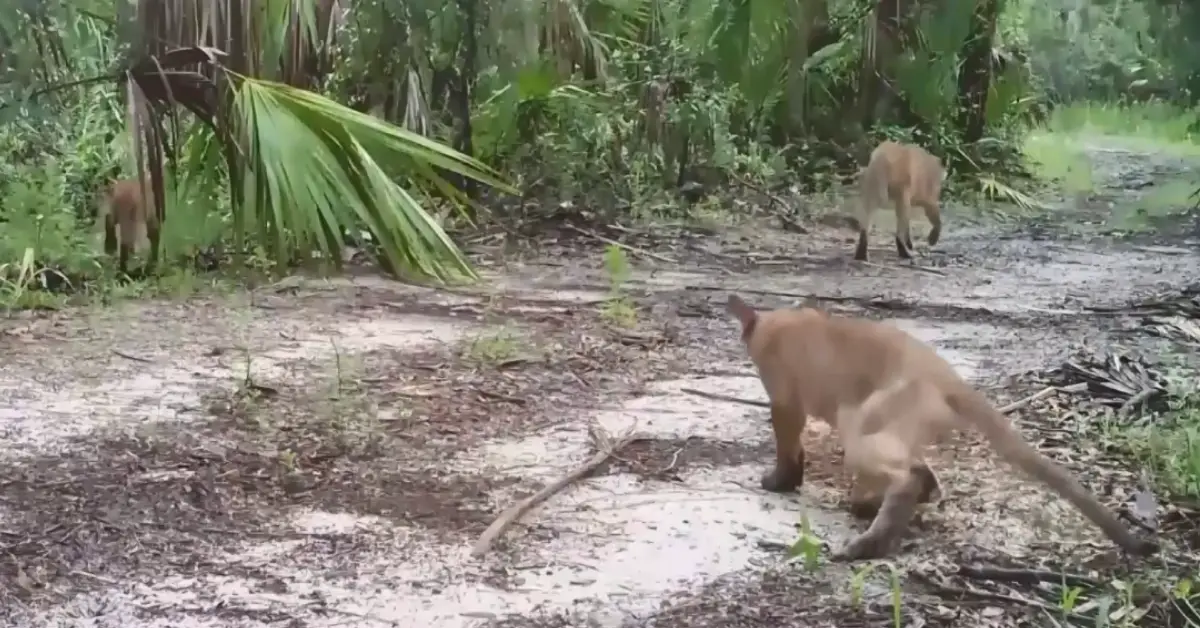Trail cameras have captured several Florida panthers being unable to walk properly. Apparently, the wild cats developed some mysterious disorder that stops them to properly use the back legs. The footages caught the attention of the wildlife officials who expressed their worries as the reason is still unknown.
According to the Fish and Wildlife Conservation Commission, trailcams in Collier, Lee and Sarasota counties captured images of eight young panthers and an adult bobcat showing walk problems.

“All the affected animals have exhibited some degree of walking abnormally or difficulty coordinating their back legs,” the Florida Fish and Wildlife Conservation Commission said in a statement.
“While the number of animals exhibiting these symptoms is relatively few, we are increasing monitoring efforts to determine the full scope of the issue.” Gil McRae, director of the FWC’s Fish and Wildlife Research Institute, told in a statement. “Numerous diseases and possible causes have been ruled out; a definitive cause has not yet been determined. We’re working with the U.S. Fish and Wildlife Service and a wide array of experts from around the world to determine what is causing this condition.”

According to the CBS News, the agency’s officials are testing for several toxins — including rat poison — as well as infectious diseases and nutritional deficiencies. They are trying to collect more videos and images of wild animals that struggle to walk. They even asked the residents to share videos of affected panthers, if they got some.
There are less than 200 of the Florida’s iconic animals left in the wild. According to the U.S. Fish & Wildlife Service, the Florida panther is called the last puma in the Eastern U.S. Known as one of the most elusive mammals in the North America, this extremely vulnerable wild cat is a cougar subspecies who lives in pinelands and hardwood hammocks.
The Fish and Wildlife Conservation Commission even shared a post on social media, in order to solve this mysterious problem as soon as possible. “Help panthers and bobcats,” the post reads. “A disorder has been seen in some Florida panthers and bobcats and we are taking this seriously.”

